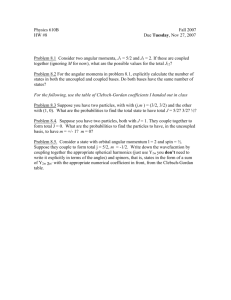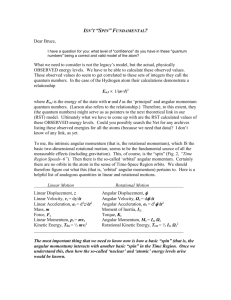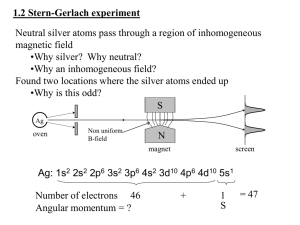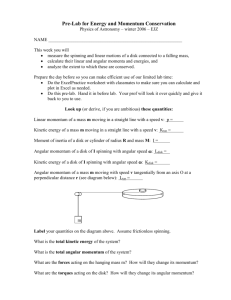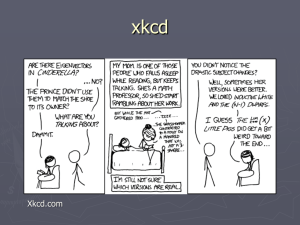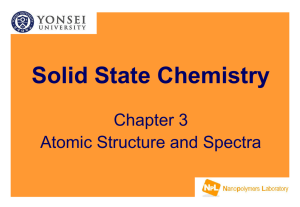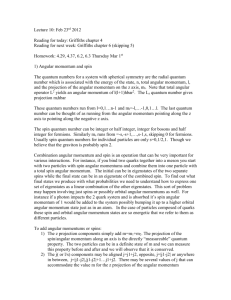Note-6
advertisement
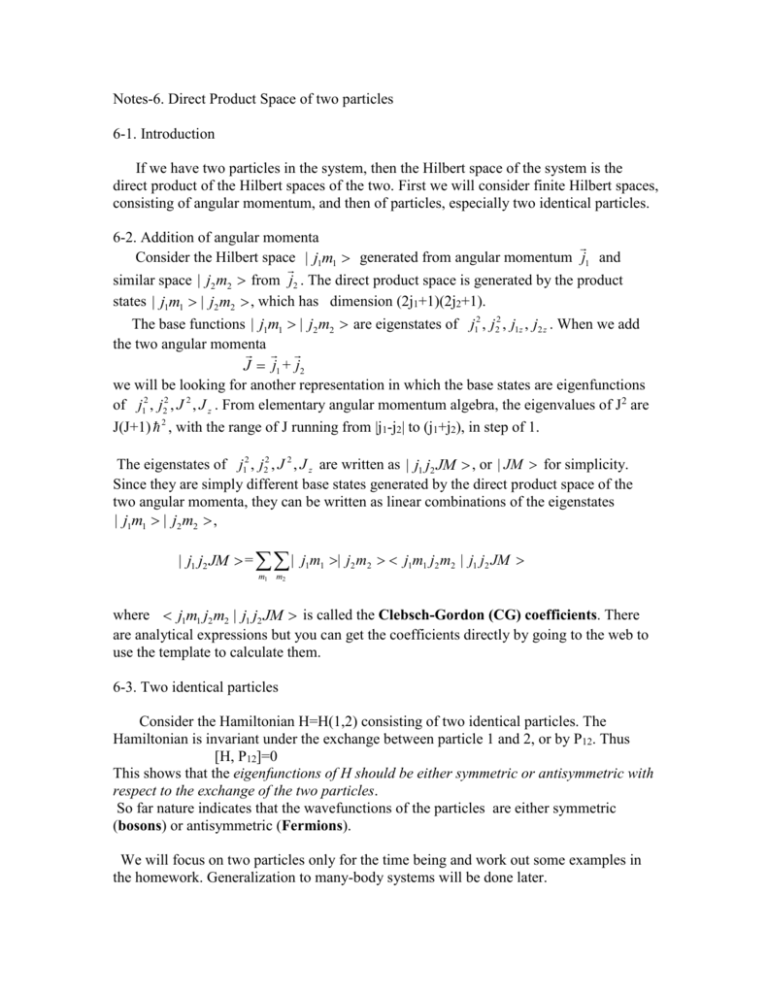
Notes-6. Direct Product Space of two particles 6-1. Introduction If we have two particles in the system, then the Hilbert space of the system is the direct product of the Hilbert spaces of the two. First we will consider finite Hilbert spaces, consisting of angular momentum, and then of particles, especially two identical particles. 6-2. Addition of angular momenta Consider the Hilbert space | j1m1 generated from angular momentum j1 and similar space | j2 m2 from j2 . The direct product space is generated by the product states | j1m1 | j2 m2 , which has dimension (2j1+1)(2j2+1). The base functions | j1m1 | j2 m2 are eigenstates of j12 , j22 , j1z , j2 z . When we add the two angular momenta J j1 + j2 we will be looking for another representation in which the base states are eigenfunctions of j12 , j22 , J 2 , J z . From elementary angular momentum algebra, the eigenvalues of J2 are J(J+1) 2 , with the range of J running from |j1-j2| to (j1+j2), in step of 1. The eigenstates of j12 , j22 , J 2 , J z are written as | j1 j2 JM , or | JM for simplicity. Since they are simply different base states generated by the direct product space of the two angular momenta, they can be written as linear combinations of the eigenstates | j1m1 | j2 m2 , | j1 j2 JM = | j1m1 | j2 m2 j1m1 j2 m2 | j1 j2 JM m1 m2 where j1m1 j2 m2 | j1 j2 JM is called the Clebsch-Gordon (CG) coefficients. There are analytical expressions but you can get the coefficients directly by going to the web to use the template to calculate them. 6-3. Two identical particles Consider the Hamiltonian H=H(1,2) consisting of two identical particles. The Hamiltonian is invariant under the exchange between particle 1 and 2, or by P12. Thus [H, P12]=0 This shows that the eigenfunctions of H should be either symmetric or antisymmetric with respect to the exchange of the two particles. So far nature indicates that the wavefunctions of the particles are either symmetric (bosons) or antisymmetric (Fermions). We will focus on two particles only for the time being and work out some examples in the homework. Generalization to many-body systems will be done later. Homework 6 6-1. Write down explicitly the spin functions for S=1 and S=0 from adding two spin ½ particles. 6-2. In terms of and for spin ½, and Ym , construct the eigenfunctions from the sum of two vectors for (a) spin ½ and orbital angular momentum =1 (b) two angular momenta each with =1 Go to the web to find the CG coefficients. Identify the symmetry of the eigenfunctions for (b) when you interchange particle 1 and particle 2, i.e., symmetric or antisymmetric. 6-3. Consider two electrons described by the Hamiltonian H p12 p2 2 V( x 1 ) V( x 2 ) 2m 2m where V( x ) for x<0 and for x>a; V(x)=0 for 0<x<a. Assume that the electrons are in the same spin state, that is 1 2 . (a) What is the lowest energy of the two-electron state? (b) What is the energy eigenfunction for this ground state? (c) What is the energy and the wave function of the first excited state, still keeping 1 2 ? 6-4. Repeat the above problem but for two bosons. 6-5. (a)A deuteron has spin 1. What are the possible total spin of two deuterons? Use CG coefficients to work out their spin wavefunctions and discuss their symmetry under interchange between the two deuterons. (b) The two deuterons also rotate with respect to each other, described by the orbital angular momentum L. What is the symmetry of the orbital angular momentum wavefunction under the exchange of the two deuterons. (c) What are the possible spin and total angular momentum (sum of part a and b) J for the two deuterons. Do not forget that the two deuterons are identical.
